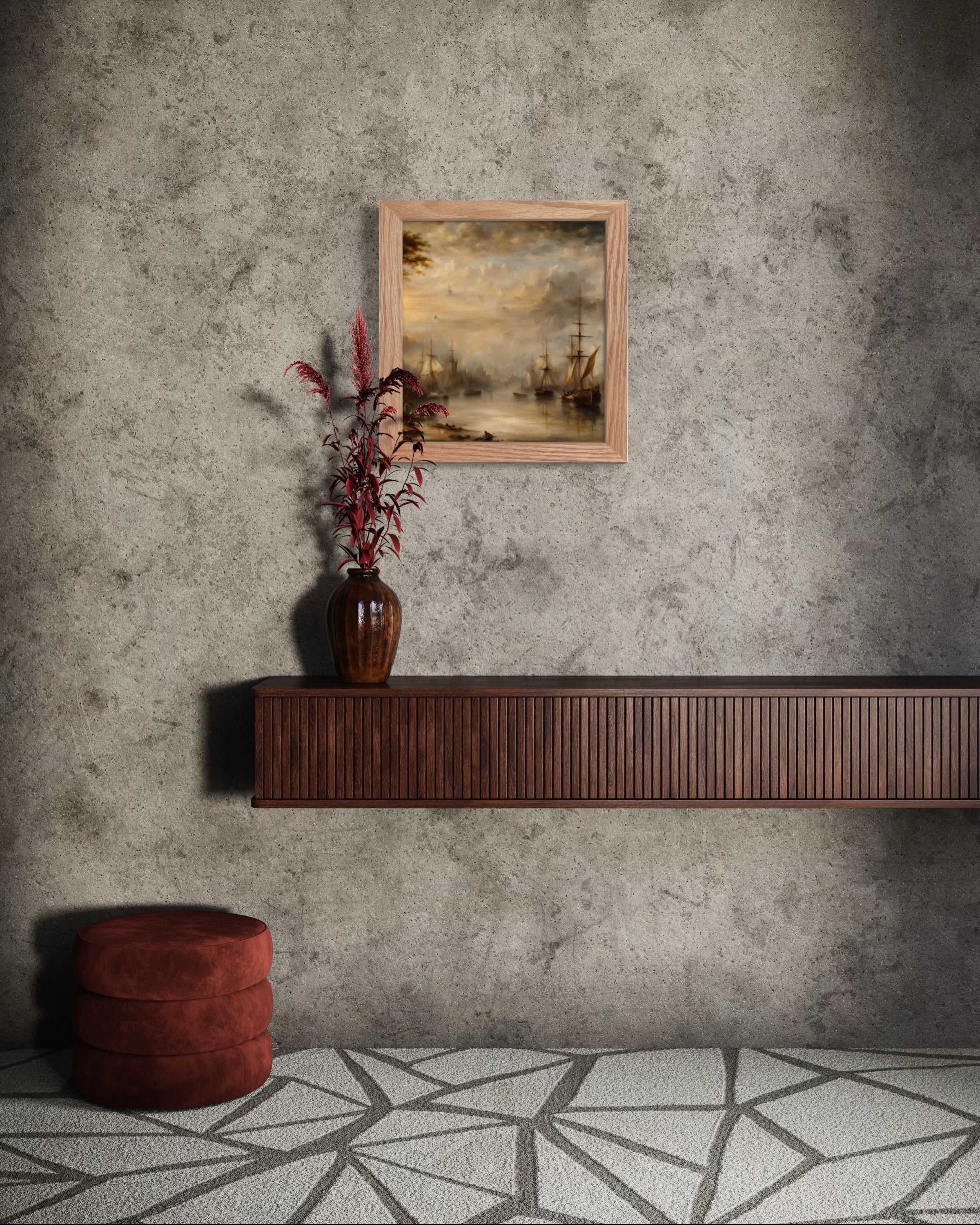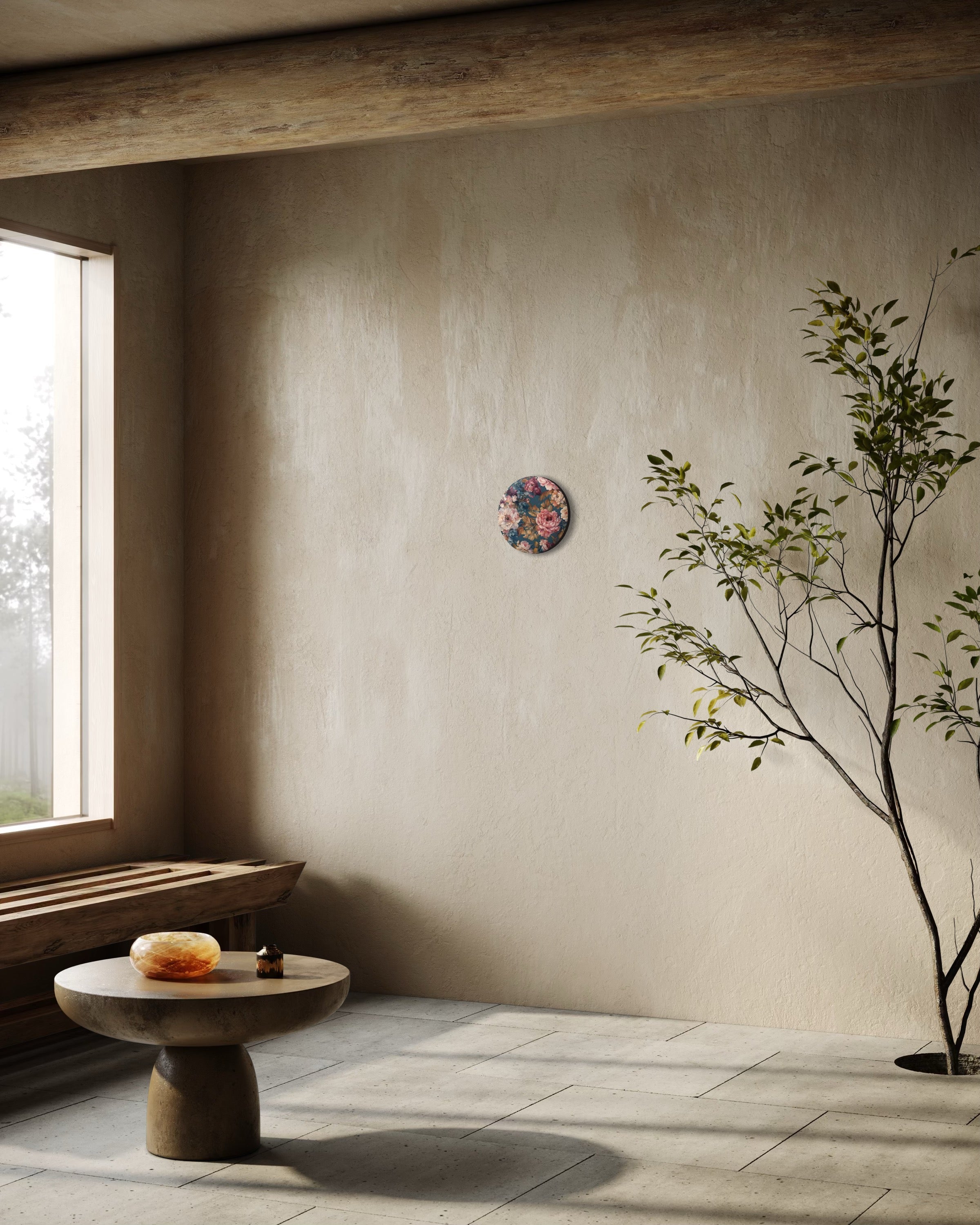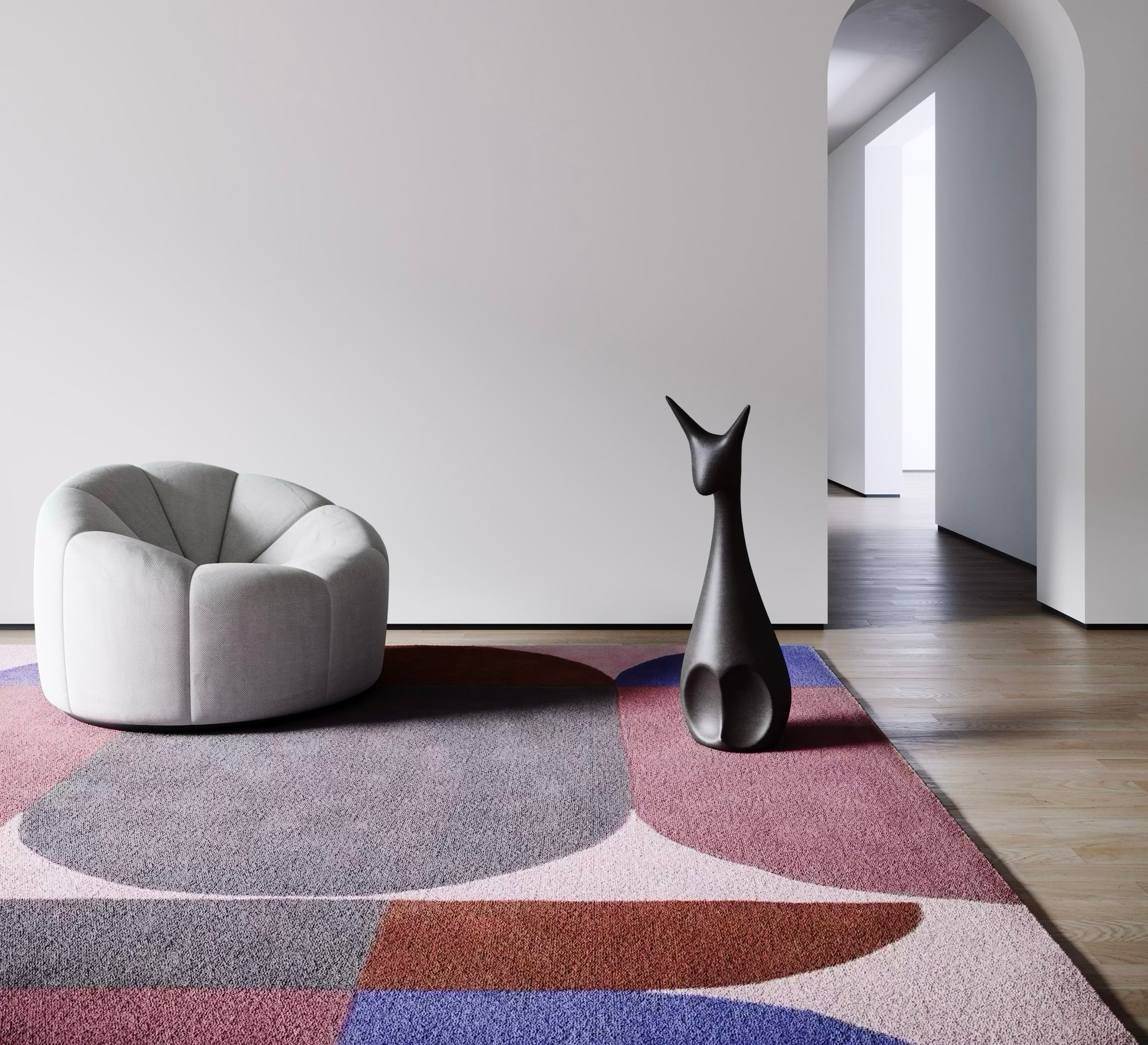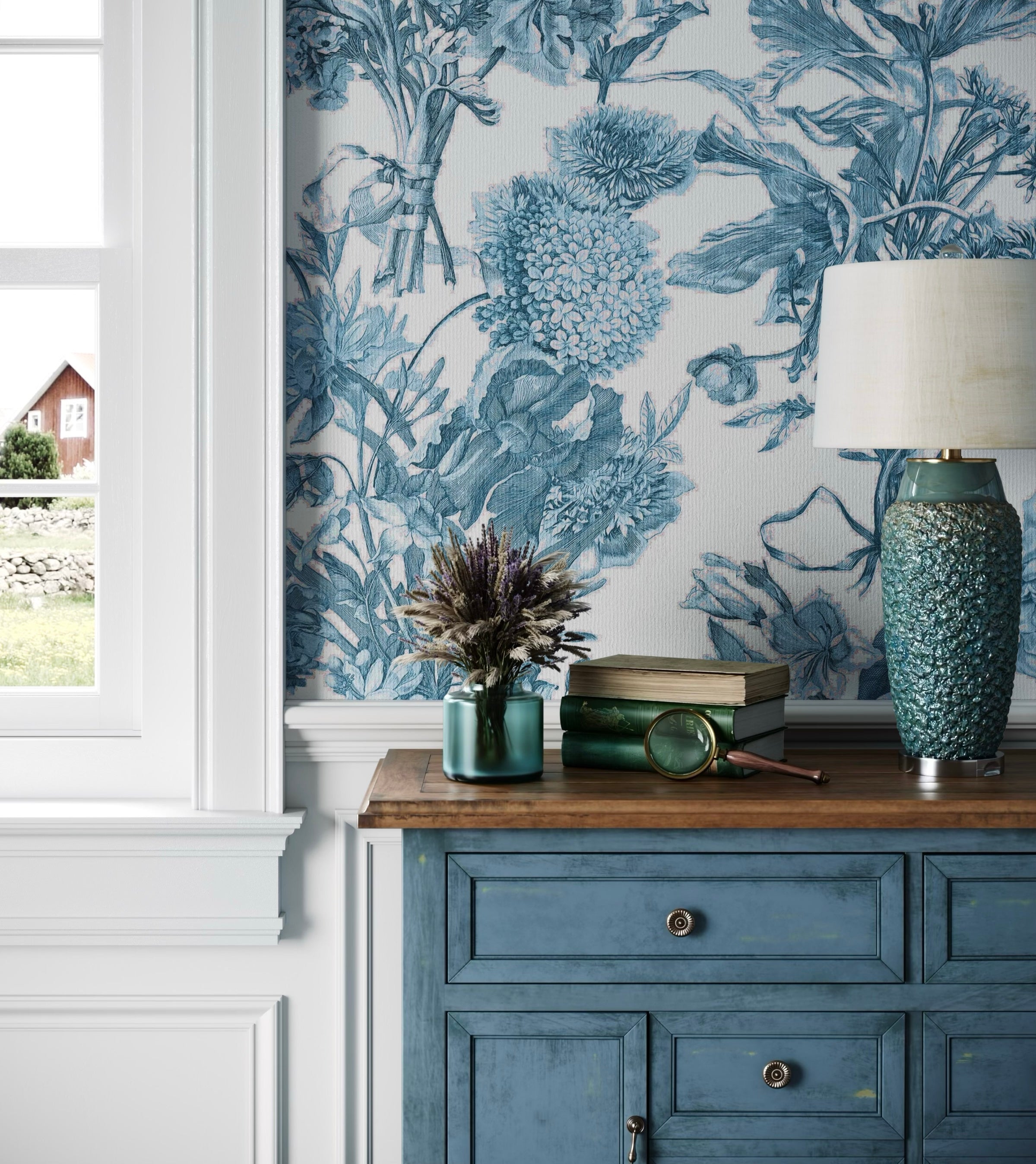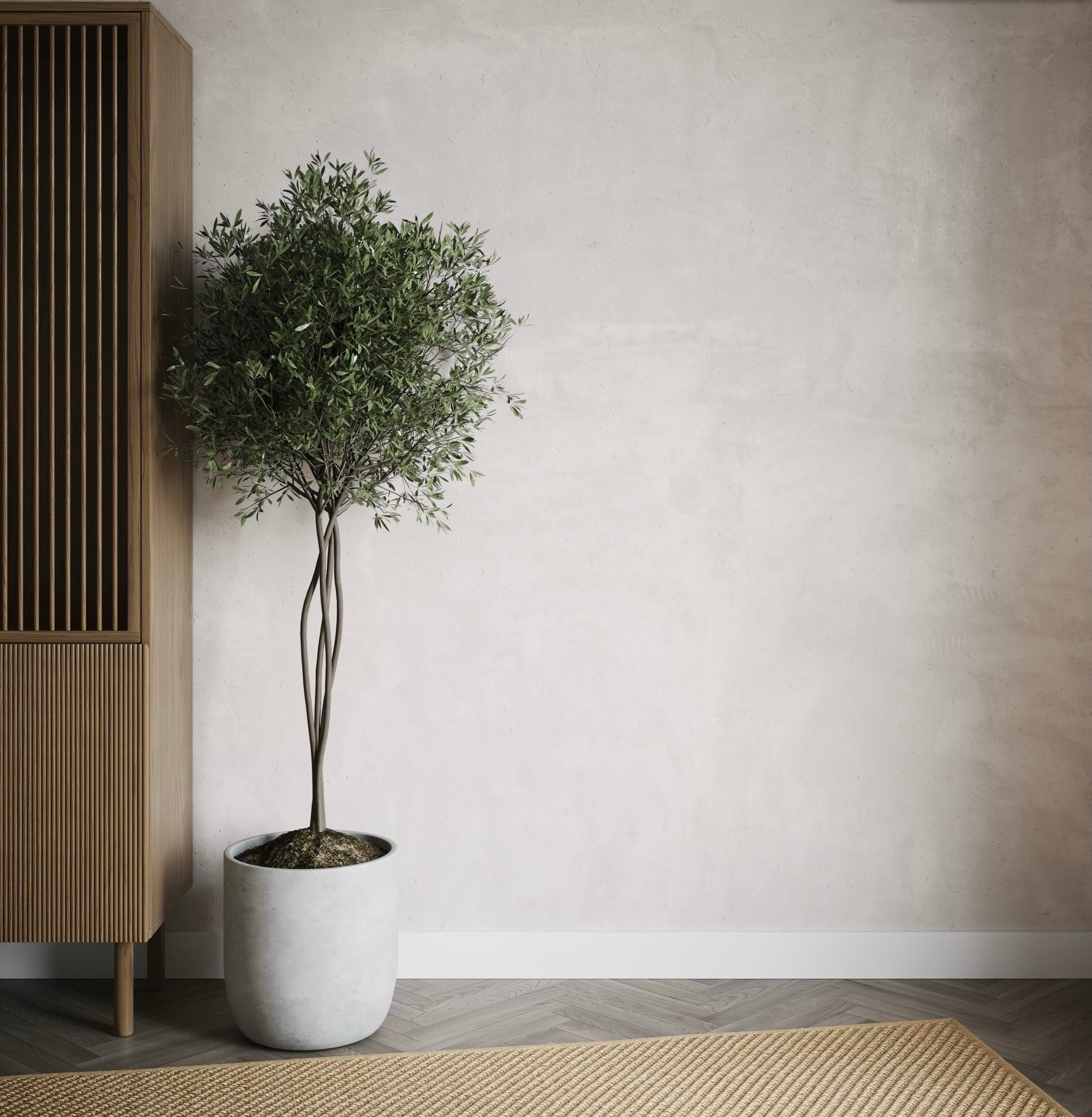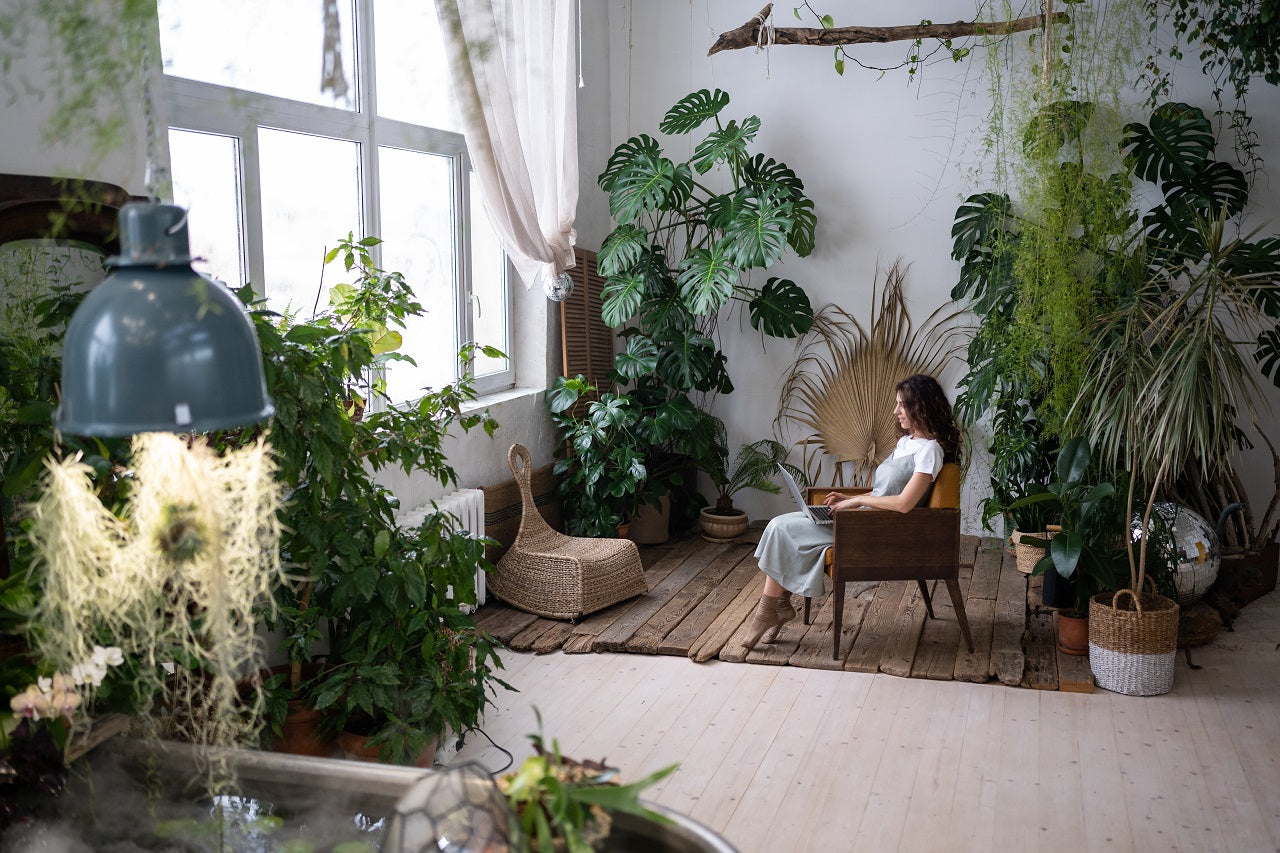
Discovering Biophilic Design: Enhance Your Living Space by Connecting with Nature
Our fast-paced, urban-focused lifestyles can often lead to a disconnection from the natural world, with modern living environments increasingly devoid of natural elements that soothe and rejuvenate the soul. In response to this ubiquitous detachment from nature, biophilic design has emerged as an innovative and transcendent approach to incorporating nature-inspired elements within our homes, fostering a deeper connection to the natural environment and promoting overall well-being and serenity.
Yet biophilic design is not merely decoration. It represents a fundamental shift in how we conceive of interior space itself, rooted in evolutionary biology, environmental psychology, and a growing body of research demonstrating what indigenous cultures have always known: humans require contact with nature not for aesthetic pleasure alone, but for cognitive function, emotional regulation, and physical health. When we bring natural materials, living systems, and organic patterns into our homes, we are not indulging in nostalgia. We are answering an ancient call written into our neurology.
The Science of Belonging: Why Biophilia Matters
The term "biophilia" was popularised by American biologist Edward O. Wilson in his 1984 book Biophilia, though the concept itself reaches back further to psychoanalyst Erich Fromm's 1973 work The Anatomy of Human Destructiveness. Wilson proposed that humans possess an innate tendency to seek connections with nature and other forms of life, shaped by millions of years of evolution in natural environments. This is not romantic theory. It is measurable biology.
Research conducted by Roger Ulrich at Texas A&M University in the 1980s demonstrated that hospital patients recovering from surgery healed faster, required less pain medication, and experienced fewer complications when their rooms overlooked natural landscapes rather than brick walls. A 2015 study published in Environmental Health Perspectives found that people living in neighbourhoods with more green space reported better mental health, even after controlling for socioeconomic factors. Japanese researchers studying shinrin-yoku (forest bathing) have documented measurable decreases in cortisol, blood pressure, and heart rate after just 15 minutes of exposure to forest environments.
The implications for interior design are profound. If proximity to nature demonstrably improves health outcomes, then the absence of nature in our built environments represents not merely aesthetic poverty but a genuine threat to wellbeing. The average person in industrialised nations now spends approximately 90% of their time indoors. For many urban dwellers, daily contact with natural systems has become so attenuated as to be nearly theoretical. We see weather through windows. We experience seasons primarily as thermostat adjustments.
Biophilic design seeks to restore what urbanisation has severed, not through nostalgic pastoralism but through intentional integration of natural elements, patterns, and processes into the places where we actually live. This is architecture and interior design as public health intervention, as psychological support, as reconnection with evolutionary heritage.
The Language of Nature: Understanding Biophilic Design Patterns
Stephen Kellert and Elizabeth Calabrese, in their foundational text The Practice of Biophilic Design (2015), identified three categories of biophilic design experience: direct experience of nature, indirect experience of nature, and experience of space and place. Within these categories exist specific patterns, each addressing different aspects of human-nature connection.
Direct experience encompasses actual contact with natural elements: plants, water, animals, weather, natural light, and air. This is the green wall in your hallway, the potted fern by the window, the fountain that brings the sound of running water into your living room. These are literal fragments of living systems, transplanted into domestic space.
Indirect experience involves representations and evocations of nature: natural materials like wood and stone, natural colours and patterns, images of nature, organic forms, and biomimetic design that echoes natural structures. This is the handwoven jute rug from our Sisu Loom collection that references grasslands, the ceramic vase glazed in colours drawn from coastal geology, the textile pattern that mirrors leaf venation.
Experience of space and place addresses how environments can evoke natural settings through spatial relationships: prospect and refuge (the ability to see without being seen), organised complexity (richness that rewards attention), transitional spaces that echo thresholds in natural environments. This is the reading nook that feels like a protected cave, the window seat that offers long views, the arrangement of furniture that creates intimacy within openness.
These patterns work not because they are pretty, though they often are, but because they trigger responses encoded in human neurology over hundreds of thousands of years. The preference for rooms with windows that offer both prospect (views outward) and refuge (protected position) mirrors survival advantages in ancestral environments. The calming effect of natural colours relates to associations with water, vegetation, and safe natural settings. We are not reasoning our way to these preferences. We are recognising them.
Materiality as Connection: The Eloquence of Natural Substances
To work with wood, stone, clay, fibre, and other materials drawn directly from earth is to maintain relationship with ecological systems. Unlike synthetic materials that sever the chain of origin, natural materials carry provenance. This timber was once a living tree that processed carbon dioxide, sheltered birds, marked seasons. This wool came from sheep that grazed specific grasslands. This cotton grew under particular sun.
Philosopher and architect Christopher Alexander wrote in The Timeless Way of Building that materials possess "the quality without a name," a wholeness that living systems display and synthetic materials lack. When you place your hand on a wooden table, you encounter not merely surface but history: growth rings recording decades, grain patterns following internal logic, subtle variations in colour testifying to the tree's response to its environment. This is information dense with meaning, whether consciously processed or not.
Our bedroom collection, featuring cotton and linen textiles, honours this principle of material honesty. Natural fibres breathe. They regulate temperature and moisture. They age beautifully, developing patina rather than simply degrading. A linen pillowcase softens with use, becoming more itself. A synthetic pillowcase merely deteriorates, moving from factory perfection toward eventual disintegration with no intervening stage of deepened character.
Stone carries even longer memory. The marble countertop, the slate tile, the granite threshold—these materials measure their existence in geological time. To incorporate stone into domestic space is to bridge temporal scales that dwarf human history. The limestone in your bathroom wall may contain fossils from seas that existed before flowering plants evolved. This is not trivial information. It is perspective made tangible.
Japanese architecture has long understood the spiritual dimensions of natural materiality. The concept of wabi-sabi celebrates the beauty of imperfection, impermanence, and incompleteness—qualities inherent in natural materials but designed out of synthetic alternatives. A perfectly uniform surface has no story. It cannot surprise you, cannot reveal anything new over time. Natural materials invite extended attention. They reward looking.
Consider how light interacts with natural versus synthetic surfaces. Wood grain creates subtle variation in reflection. Stone texture produces complex shadow patterns. Natural textiles diffuse light softly, their slight irregularities preventing the harsh uniformity that characterises synthetic fabrics. These are not merely aesthetic differences. They are information-rich environments versus information-poor ones, complexity versus uniformity, aliveness versus stasis.
Light and Air: The Invisible Architecture of Wellbeing
Long before we understood the biochemistry of vitamin D synthesis or the role of circadian rhythms in regulating dozens of physiological processes, humans built cultures around the sun. Solar orientation determined settlement patterns, informed architectural traditions, shaped daily routines. Industrial civilisation, with its artificial lighting and climate control, severed this ancient dependency, but our biology has not adapted to the change.
Exposure to natural light regulates the production of melatonin and cortisol, hormones that govern sleep-wake cycles, mood, immune function, and metabolism. Artificial light can illuminate, but it cannot fully replace the dynamic quality of sunlight, which changes in colour temperature, intensity, and angle throughout the day and across seasons. These variations provide temporal information that helps orient human physiology within the larger rhythms of the planet.
The strategic placement of windows becomes, therefore, not merely an architectural nicety but a health intervention. South-facing windows in northern hemisphere homes (north-facing in the southern hemisphere) provide consistent natural light without excessive heat gain. East-facing windows capture morning light, supporting natural wake cycles. West-facing windows extend evening light but can create uncomfortable glare and heat. North-facing windows (south in the southern hemisphere) offer gentle, indirect light ideal for workspaces.
Beyond positioning, window treatment matters enormously. Heavy, light-blocking curtains may provide privacy and thermal insulation, but they also eliminate natural light as a temporal signal. Sheer curtains or adjustable blinds allow graduated control, admitting light whilst maintaining privacy. Consider how the layered textiles in our living room collection can create this nuanced relationship with natural light—filtering rather than blocking, softening rather than eliminating.
Skylights and light tubes represent more radical interventions, bringing illumination into interior spaces that otherwise exist in permanent shadow. A skylight transforms a bathroom or hallway from utilitarian passage into space touched by weather, marked by time of day, connected to celestial mechanics. You become aware of cloud movement, of seasonal solar angles, of the moon's phases. The space remains enclosed yet opens to cosmic scale.
Fresh air carries similar importance, though it is even more neglected in contemporary design. Mechanical ventilation systems can exchange air, but they cannot replicate the quality of natural ventilation—the slight variations in temperature and humidity, the occasional intrusion of outside scents (flowering plants, rain, cut grass), the gentle movement that prevents the stagnancy of still air. Opening windows creates relationship with exterior environment. You hear birds, traffic, wind, rain. You smell seasons. You feel temperature gradients.
The biophilic home finds ways to admit natural air without compromising comfort or security. Operable windows positioned to create cross-ventilation. Internal courtyards that bring outside space into the building envelope. Screened porches and conservatories that blur the boundary between interior and exterior. These strategies require more sophisticated design than simple mechanical solutions, but they produce spaces that feel alive in ways sealed, climate-controlled rooms cannot.
The Green Presence: Living Plants as Collaborators
To introduce plants into domestic space is to welcome other organisms into your daily life, creating an ecosystem, however modest, rather than simply decorating an enclosure. This distinction matters. Plants are not objects. They are living systems engaged in continuous metabolic activity: photosynthesis, respiration, transpiration, growth. They respond to their environment, grow toward light, adjust to seasonal changes in day length. They are, in a profound sense, co-inhabitants of your home rather than possessions within it.
The health benefits of indoor plants extend beyond their well-documented air purification capabilities (NASA's Clean Air Study in 1989 identified numerous houseplants that remove volatile organic compounds from air). Plants increase humidity through transpiration, beneficial in the dry environments created by heating systems. They reduce ambient noise through sound absorption. They provide visual interest that changes over time—new leaves, seasonal dormancy, flowering cycles—creating dynamism in interior spaces.
But perhaps most significantly, plants demand attention. They require watering, occasional fertilising, pruning, repotting. This necessity of care creates relationship. You cannot remain completely disconnected from natural cycles when you are responsible for keeping something alive. When the fern's fronds begin to brown, you notice air humidity. When the succulent etiolates, stretching toward light, you become aware of sun angles. The plant becomes teacher, revealing aspects of your environment you might otherwise ignore.
Selection of plants should consider not only aesthetic appeal but ecological appropriateness. Choose species suited to your available light conditions rather than forcing sun-loving plants into shade or shade-tolerant species into blazing south windows. Consider your ability to maintain consistent care. A neglected, dying plant generates stress rather than solace. Better a single thriving pothos than a collection of struggling specimens.
Arrangement matters as well. Isolated plants become decorative objects. Grouped plants begin to suggest landscape, creating layered compositions that echo natural plant communities. Vary heights, textures, and forms. Combine upright architectural plants like snake plants with trailing species like string of pearls, adding mid-height ferns or prayer plants for complexity. The goal is not botanical garden completeness but suggestion of abundance, of green presence.
Our Sisu Tuin collection, celebrating botanical beauty through textiles and ceramics, extends this plant presence beyond living specimens. A cushion printed with magnified leaf structures, a plate adorned with botanical illustration, a textile pattern echoing fern fronds—these objects keep plant forms in peripheral vision even in rooms where living plants might be impractical. They serve as reminders of the larger green world, as invitations to remember relationship with flora even in their physical absence.
Large plants create particularly powerful presence. A fiddle-leaf fig rising to ceiling height transforms spatial experience, making domestic space feel less like interior room and more like clearing in forest. A substantial palm anchors a corner, creates canopy, suggests tropical abundance. These are investments—in both money and care—but they fundamentally alter how a room feels. Scale matters in creating authentic biophilic experience.
Natural Focal Points: Anchoring Space with Elemental Presence
Every room needs a centre of gravity, a place where attention naturally settles. In biophilic design, these focal points often incorporate natural elements or evoke natural processes, providing anchors that connect interior space to larger ecological and geological contexts.
Water features exemplify this principle beautifully. The sound of moving water—fountain, indoor stream, even a substantial aquarium with strong filtration—introduces an acoustic element that masks intrusive noise whilst providing positive sensory stimulation. Flowing water creates negative ions, which some research suggests improves mood and cognitive function, though the evidence remains debated. More certainly, water features introduce humidity into dry interior environments and create visual interest through movement and light reflection.
A living wall or vertical garden represents perhaps the most dramatic form of interior greening, transforming an entire surface into growing medium. These require more sophisticated infrastructure—irrigation systems, drainage, appropriate lighting if natural light is insufficient—but the impact is correspondingly greater. A wall of thriving plants fundamentally changes how a room reads, shifting perception from interior space to something closer to grotto or conservatory. The investment is significant; the transformation is total.
Fireplace designs that reveal flame rather than hiding it behind glass create another elemental focal point. Fire has been central to human dwelling for hundreds of thousands of years, providing heat, light, protection, and social gathering point. Modern safety regulations often require screens, but even partially visible flame creates powerful presence. The movement, colour variation, and sound of burning wood (where permitted) or realistic gas flames engage attention in ways television cannot replicate.
Stone features—a wall clad in stacked stone, a fireplace surround in rough-hewn granite, a water feature incorporating river rock—bring geological time into domestic scale. These materials carry weight, both literal and metaphorical. They ground space, providing visual and tactile density that counterbalances the lightness of modern construction. To lean against a stone wall is to touch something that measures existence in millions of years. This is not decorative gesture. It is connection to planetary history.
Art from our Sisu Atelier collection, featuring original works on natural themes, can serve as focal points that evoke natural environments even in their stylised or abstract representation. A landscape painting, a photograph of coastal formations, a sculptural piece suggesting organic forms—these works direct attention outward, toward natural world, even as they function within interior space. They are windows of imagination, glimpses of elsewhere.
The key is intention. Focal points should not merely occupy prominent positions but should offer something worth sustained attention. A genuinely interesting object—a piece of driftwood with extraordinary form, a crystal geode revealing complex internal structure, a substantial piece of coral (ethically sourced)—invites repeated looking. It reveals more over time. This quality of sustained interest characterises natural objects in ways mass-produced décor typically cannot match.
Patterns and Rhythms: The Geometry of the Living World
Biophilic design extends beyond literal incorporation of natural elements to include patterns, forms, and organisational principles derived from natural systems. Fractals, spirals, branching patterns, tessellations, and other geometric arrangements found throughout nature create visual interest and psychological comfort when incorporated into interior design.
Fractals—patterns that repeat at different scales—appear in tree branches, river networks, coastlines, snowflakes, and countless other natural phenomena. Research suggests humans find fractal patterns particularly attractive and that viewing them can reduce stress. The branching pattern of a tree limb echoes in smaller twigs, which echo in leaf veins, creating self-similar structure across scales. Interior design can incorporate this principle through branching light fixtures, textile patterns that repeat motifs at different sizes, or wallpaper designs that reward examination at multiple distances.
The golden ratio (approximately 1:1.618) appears frequently in natural forms—nautilus shells, sunflower seed arrangements, pine cone spirals, galaxy shapes—and has been used in architecture and art for millennia. While debate continues about whether humans truly prefer golden ratio proportions innately, the frequent appearance of these ratios in nature suggests they represent efficient solutions to growth and packing problems. Furniture arrangements, room proportions, and even the placement of artwork can consider these ratios, creating spatial relationships that feel balanced without obvious symmetry.
Colour palettes drawn from natural environments tend toward earth tones—browns, greens, blues, greys—with accents of brighter colours that appear in flowers, fruits, or sunset skies. These palettes feel restful because they reference environments that historically signalled safety and resource availability. A room decorated entirely in bright, saturated colours can feel energising initially but often becomes fatiguing over time. Natural colour schemes provide visual rest, the comfortable neutrality against which life unfolds.
Texture variation also matters enormously. Natural environments present constant tactile diversity: rough bark, smooth stone, soft moss, sharp pine needles, cool water, warm sand. Interior spaces dominated by uniform textures—painted drywall, laminate flooring, synthetic fabrics—become monotonous. Deliberately introducing textural variety through natural materials, woven textiles, varied surface treatments, and mixed media keeps spaces interesting at sensory level. Run your hand along a wall and encounter variation rather than uniformity. This is richness.
The varied textures in our Sisu Loom collection—from smooth silk to coarse jute—provide this tactile diversity underfoot, creating sensory experience that shifts as you move through space. A jute rug in the hallway, transitioning to wool in the bedroom, then cotton in the bathroom, creates subtle zoning through texture rather than visual barriers. You feel the change before you see it.
Cultural Perspectives: Indigenous Wisdom and Contemporary Practice
Western discourse around biophilic design often treats the concept as recent innovation, but indigenous cultures worldwide have maintained unbroken traditions of living in direct relationship with natural systems. These traditions offer profound insights into creating dwellings that honour and incorporate natural elements without extracting them from ecological context.
The Sámi people of northern Scandinavia traditionally built goahti or lavvu structures using materials available in their environment—wooden frames, reindeer hides, later canvas—creating shelters that could be assembled, disassembled, and moved to follow reindeer herds. These dwellings maintained direct connection to weather and seasons whilst providing necessary protection. The central hearth created the only modern distinction between inside and outside; otherwise, occupants lived in relationship with wind, temperature, and sky.
Japanese architecture has long emphasised connection between interior and exterior spaces through elements like engawa (the intermediate space between interior room and garden), shoji screens that filter light whilst maintaining visual connection to outside, and gardens designed to be viewed from specific interior positions. The concept of shakkei (borrowed scenery) incorporates distant landscape elements into garden design, expanding the apparent extent of a property to include mountains, forests, or other natural features beyond its boundaries. The dwelling becomes part of landscape rather than imposition upon it.
The Māori wharenui (meeting house) incorporates carved wooden elements representing ancestors and tribal history, creating structure that is simultaneously shelter and genealogical record. Natural materials—timber, flax, earth—connect the building to the land whilst carved patterns reference natural forms like koru (unfurling fern fronds). The building is not separate from nature but is expression of it, material made meaningful through cultural knowledge.
These traditions suggest that biophilic design, at its deepest level, is not about importing plants or using natural materials but about reconceiving the relationship between dwelling and world. The home is not refuge from nature but participation in it, a particular arrangement of natural materials creating temporary shelter within ongoing ecological processes. When we bring a potted tree inside, we are not capturing nature but acknowledging continuity between interior and exterior, between human dwelling and larger living systems.
Contemporary architects working in biophilic traditions include Kengo Kuma, whose buildings incorporate natural materials and create gradual transitions between inside and outside, and Peter Zumthor, whose work demonstrates how natural materials can create spaces of profound sensory richness. These practitioners show that biophilic design need not mean rusticity or rejection of modernity but can represent sophisticated integration of natural principles with contemporary needs.
Practical Beginnings: Starting Your Biophilic Journey
Transforming your home into a more biophilic space does not require complete renovation or enormous expense. Small, intentional changes accumulate into significant experiential shifts. Begin with assessment: which rooms feel most disconnected from nature? Where do you spend the most time? What natural elements are already present but perhaps not emphasised?
Start with light. Can you increase natural light exposure through different window treatments? Would rearranging furniture to create reading or working spaces near windows improve your daily experience? Consider how light moves through your home at different times of day and arrange activities to coincide with appropriate light conditions—morning routines near east-facing windows, evening reading near west-facing ones.
Add plants strategically. Rather than scattering individual specimens randomly, create groupings that suggest abundance. A windowsill covered with small succulents, a floor corner with three plants of different heights, a hanging planter creating green presence at eye level. Start with hardy species suited to your actual light conditions rather than aspirational plants that will struggle.
Introduce natural materials gradually. A wooden bowl, a stone mortar and pestle, linen napkins, a jute doormat—each small addition shifts material presence of your space toward natural and away from synthetic. Browse our collections for pieces that bring natural materials and biophilic patterns into daily use, from handwoven textiles to botanical-inspired designs.
Consider sound. Can you hear birds from your windows? Does traffic noise dominate? A small water fountain can mask intrusive sound whilst adding pleasant ambient noise. Wind chimes positioned to catch breeze create variable, non-repeating patterns that feel alive rather than mechanical.
Reduce visual clutter. Natural environments possess what researchers call "organised complexity"—richness that rewards attention without overwhelming. A room crowded with disparate objects creates visual noise rather than interesting complexity. Curate rather than accumulate, keeping items that have genuine meaning or beauty whilst releasing those that merely occupy space.
Create zones within rooms that serve different functions and feel different texturally or visually. A reading corner with soft textiles and warm light, a workspace near windows with hard surfaces for focus, a meditation area with minimal furniture and plants. These micro-environments create variety within single room, preventing monotony.
The Wider View: Biophilic Design and Planetary Health
Individual choices about home design accumulate into broader patterns with environmental consequences. Biophilic design, properly practised, aligns personal wellbeing with ecological sustainability. Natural materials tend toward renewable and biodegradable rather than petroleum-derived and persistent. Plants improve indoor air quality, reducing reliance on mechanical filtration. Natural light and ventilation decrease energy consumption.
But the connection runs deeper than material accounting. Biophilic design fosters relationship with natural systems, and relationship changes behaviour. When you maintain houseplants, you become attuned to humidity, light, and seasonal cycles. When you value natural materials, you begin considering their sources. When you orient life toward natural light, you notice weather, sky, time of day. These small attentions accumulate into broader ecological awareness.
E.O. Wilson argued that biophilia represents not merely aesthetic preference but survival imperative. Humans who maintained strong connections with natural systems, who could read weather patterns and plant health and animal behaviour, survived and reproduced. Those who became disconnected perished. The preference for natural environments may be aesthetic, but it is aesthetic born of necessity, beauty that signals life possibility.
In an era of accelerating climate change and biodiversity loss, fostering biophilia takes on ethical dimensions beyond personal comfort. To create homes that honour and incorporate natural elements is to practice daily relationship with the more-than-human world. It is small-scale work toward larger cultural shift, from seeing nature as resource to be exploited toward recognising it as community to which we belong.
Further Study
For those wishing to explore biophilic design more deeply:
Foundational Texts:
- Wilson, Edward O. Biophilia (Harvard University Press, 1984): The seminal work introducing the biophilia hypothesis
- Kellert, Stephen R. and Elizabeth F. Calabrese. The Practice of Biophilic Design (2015): Comprehensive professional guide to implementing biophilic principles
- Alexander, Christopher. A Pattern Language (Oxford University Press, 1977): Influential text on design patterns that create psychologically satisfying spaces
Research Resources:
- Terrapin Bright Green: Research and consulting firm specialising in biophilic design, offering downloadable reports and case studies
- Journal of Environmental Psychology: Academic journal publishing research on human-environment relationships
- International Living Future Institute: Organisation promoting sustainable building practices including biophilic design principles
Practical Guides:
- Cho, Anjie. Holistic Spaces: 108 Ways to Create a Mindful and Peaceful Home (CICO Books, 2018): Accessible guide combining feng shui with biophilic principles
- Browning, William D. et al. 14 Patterns of Biophilic Design (Terrapin Bright Green, 2014): Free downloadable guide detailing specific biophilic design patterns
Cultural Perspectives:
- Suzuki, Daisetz T. Zen and Japanese Culture (Princeton University Press, 1959): Classic text exploring Japanese aesthetic principles including natural material use
- Benyus, Janine M. Biomimicry: Innovation Inspired by Nature (William Morrow, 1997): Explores how human design can learn from natural systems
Living Connection
Biophilic design represents more than aesthetic movement or passing trend. It responds to fundamental human need for connection with natural world, need that urban living and technological mediation have obscured but not eliminated. When we bring natural materials, living plants, elemental processes, and organic patterns into our homes, we are not decorating. We are restoring relationship, creating spaces that support not merely survival but flourishing.
Your home can become place where daily life unfolds in companionship with green growth, where light marks time's passage, where materials carry memory of forests and mountains and seas, where patterns echo forms that have sustained life for millions of years. This is not return to primitive dwelling but evolution toward sophisticated integration, spaces that honour both human need for shelter and comfort and equally profound need for connection to the living world.
Begin simply. Add one plant. Open windows to air and birdsong. Notice how light moves through your rooms. Choose natural materials when replacement is needed. Gradually, incrementally, your dwelling shifts toward greater aliveness, becoming not merely shelter from nature but participation in it, a particular expression of biophilia—love of life—made tangible and daily.
At Sisuverse, we honour this philosophy of connection through collections that bring natural materials, botanical inspirations, and artisanal traditions into contemporary homes. Explore our handwoven textiles, garden-inspired designs, and original artworks as you create your own sanctuary of natural beauty.
